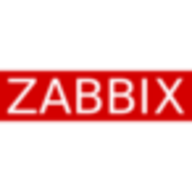

Zabbix and Amazon CloudWatch compete in the monitoring tools category, with Zabbix offering more customizable alerting features and a cost-effective open-source model, while Amazon CloudWatch is integrated seamlessly with AWS services, offering a comprehensive view of AWS-centric infrastructures.
Features: Zabbix stands out with extensive customization capacities and robust monitoring features through low-level discovery, templates, and macros. It supports integration with Grafana for enhanced data visualization and offers multiple notification methods. Amazon CloudWatch seamlessly integrates with AWS services, providing detailed metrics and logs analytics, and allows users to trigger automatic events.
Room for Improvement: Zabbix users report challenges with reporting and SLA customization, a steep learning curve, and limited cloud-specific monitoring features. There is also a need for enhanced automation and better integration with tools like Grafana. Amazon CloudWatch users note issues with the pricing of custom metrics, lack of comprehensive APM features, and limited usability outside AWS environments. Improvements in real-time monitoring and visualization are also desired, prompting exploration of third-party tools like Datadog.
Ease of Deployment and Customer Service: Zabbix is mainly deployed on-premises and suited for hybrid cloud environments, requiring considerable time investment and technical expertise. Community forums and paid support offer technical assistance. Amazon CloudWatch is focused on public cloud deployment within AWS environments, offering easy integration with existing AWS services. Amazon's customer support is efficient but can be expensive.
Pricing and ROI: Zabbix provides a cost advantage with its free open-source model, reducing entry costs for enterprises but may lead to indirect costs related to implementation expertise. Conversely, Amazon CloudWatch has a pay-as-you-go model, potentially becoming expensive with increased usage. Its pricing includes costs for storage and data retrieval, making it costly for extensive monitoring needs but remains a viable choice for AWS users due to ease of integration.
Amazon CloudWatch offers cost-saving advantages by being an inbuilt solution that requires no separate setup or maintenance for monitoring tasks.
While using their cloud and cloud resources, if you have an issue with CloudWatch, you must pay additional monthly fees to get time from dedicated tech support.
In recent years, due to business expansion, knowledge levels among support engineers seem to vary.
It is so straightforward that I have never had to use the support.
Amazon CloudWatch's scalability is managed by AWS.
Zabbix has high scalability.
Zabbix is very scalable and lightweight.
I would rate its scalability ten out of ten.
I sometimes notice slowness when Amazon CloudWatch agents are installed on machines with less capacity, causing me to use other monitoring tools.
Zabbix is very scalable and lightweight.
Zabbix is quite stable, and we haven't had any problems with Zabbix itself.
When using third-party dashboards such as Kibana or Grafana and other visualization tools, there should be a way to feed CloudWatch's data and logging capabilities into these visualization tools.
Amazon CloudWatch charges extra for custom metrics, which is a significant disadvantage.
Maybe Amazon Web Services can improve by providing a library for CloudWatch with some useful features.
The only issue I can note is that it's Linux-based, and Linux documentation is not the best.
Overall, the pricing of Amazon CloudWatch is very expensive.
Amazon CloudWatch charges more for custom metrics as well as for changes in the timeline.
It is literally free.
Being an inbuilt solution from AWS, it saves time on installation, setup, and maintenance.
The best features of Amazon CloudWatch need to improve visibility into the network because when using hundreds of network resources such as transit gateway, VPNs, routers, route tables, and firewalls, it does not give many details in a structured manner.
I like its filtering capability and its ability to give the cyber engine insights.
If disk usage surpasses a threshold, say 70%, I receive alerts and can take proactive action.
Zabbix is Linux-based open-source software, and the main use case is to reduce costs.
Zabbix has a lot of features, including monitoring, status updates, and collecting information telemetry from storages and servers as well.
| Product | Market Share (%) |
|---|---|
| Zabbix | 3.3% |
| Amazon CloudWatch | 1.6% |
| Other | 95.1% |


| Company Size | Count |
|---|---|
| Small Business | 17 |
| Midsize Enterprise | 8 |
| Large Enterprise | 24 |
| Company Size | Count |
|---|---|
| Small Business | 53 |
| Midsize Enterprise | 23 |
| Large Enterprise | 34 |
Amazon CloudWatch integrates seamlessly with AWS, providing real-time monitoring and alerting features. Its interface supports task automation, enhancing troubleshooting and analytics capabilities, while offering strong security and scalability at a cost-effective rate.
Amazon CloudWatch is an impactful platform for monitoring AWS resources and managing application performance. It simplifies infrastructure performance monitoring by providing comprehensive analytics capabilities, including application insights and event scheduling. Users appreciate CloudWatch for its detailed metrics, dashboards, and support in issuing alerts to detect anomalies. It efficiently tracks performance, optimizes resource utilization, and ensures service availability. CloudWatch is recognized for its robust alerting features and integration with other AWS services, further supporting its resource monitoring capabilities. However, there is room for improvement in dashboard customization, log streaming speed, and integration with non-AWS services. Enhancements in API integration, machine learning features, and support for third-party tools are also desired.
What features does Amazon CloudWatch offer?Industries implementing Amazon CloudWatch often focus on optimizing IT infrastructure. Companies in sectors like finance and e-commerce rely on its monitoring and alerting capabilities to ensure service uptime and performance. The platform's automation and analytics features empower teams to proactively manage performance and detect potential issues promptly.
Zabbix is an open-source monitoring software that provides real-time monitoring and alerting for servers, networks, applications, and services.
It offers a wide range of features including data collection, visualization, and reporting.
With its user-friendly interface and customizable dashboards, Zabbix helps organizations ensure the availability and performance of their IT infrastructure.
We monitor all Application Performance Monitoring (APM) and Observability reviews to prevent fraudulent reviews and keep review quality high. We do not post reviews by company employees or direct competitors. We validate each review for authenticity via cross-reference with LinkedIn, and personal follow-up with the reviewer when necessary.